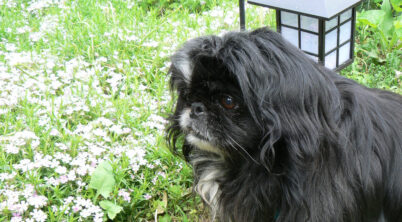The Pekingese dog is a toy breed with a royal background and an interesting yet, adorable appearance. The breed is of ancient Chinese royalty which was so protected and cherished, such that they even had their own servants. So cool, right? Well, that is not all. They have quite an interesting heritage, learn more about the history of the Pekingese dog.
The Pekingese dog breed is a small dog which weighs about fourteen pounds. They have a stocky and buff built. Their coat is often referred to as a lion’s mane due to its majestic shine and silkiness. A fun part about their appearance, apart from their cute envelope nose, is the fact that they come in different colors.
Pekingese dogs are charming creatures with unmatched loyalty. However, as per Pekingese dog parents, these fluffy little angels can be quite stubborn and “opinionated.” But can you seriously blame them? They come from a royal heritage and background. Moreover, even though they make strong bonds with their humans, they usually only tolerate younger kids. Emphasis on the word ‘tolerate’. Younger kids tend to get a little rough with animals. Providing a safe place for your dog is one reason to crate train. Other than providing a safe haven for your dog, other very important reasons is that it greatly simplifies house training, can be helpful during emergencies, and very helpful when travelling. These are enough for you to consider crate training them.
What is crate training?
Being confused about crate training is normal for newbies. Some people do not support it because they are ignorant to the concept of crate training. They think it is cruel that the pet is being designated to a cage. However, they are not considering the needs of their dog. Instead, they are putting their emotions above what needs to be done for the greater good. Crate training could seem a little harsh in the initial stages but, once your dog is completely crate trained, they treat their crate as their ‘me time’ space. Yeah, so let’s get our concepts cleared, now shall we?
Crate training is actually a series of teaching experiences for your dog where you teach them to get used to his crate. Now, it is not necessary that you keep them in the crate for their whole lives. You can get rid of their crates when you think that your pet is trained enough to sleep anywhere they want without causing a ruckus in your life and endangering theirs as well, but it would be helpful to keep it around as their place of safety or escape.
Crate training for house (potty) training is most helpful. Dogs will not soil or otherwise pee and poop in their living space, so it’s important that they see the crate as their own personal space. It is also important to get a proper-sized crate. One that is too big will result in your pet dog having a potty corner, which defeats the purpose of using it to potty train. The right size of crate is one that only has enough for your pet Pekingese to lie down and turn around. It is recommended to get a crate that comes with an adjustable divider, so you can change the amount of room they get as they grow.
How to crate train a Pekingese dog
Before starting the crate training, take a look at the cautions provided to ensure that you effectively crate train your Pekingese and not be cruel towards it.
Rule#1 – Never use the crate as a form of punishment as this will promote a negative relationship between your dog and its crate.
Rule#2 – Never leave your dog inside the crate for an extended period of time as it can make them extremely anxious, depressed, or bored. The most you should leave your dog while training, especially if it’s a puppy, is 3 to 4 hour a day.
Rule#3 – Graduate your dog from the crate once they are able to be by their own. The crate is a training process and not a way of life.
Okay now, back to the regular program!
Below is a step-by-step guide as to how one should crate train their Pekingese dog.
Step#1 – Introduce your Pekingese to the crate.
Take your dog to the crate and act all excited to show your Pekingese that the crate is a good place to be. This will make a positive introduction. However, ensure that you make it a comfortable and welcoming place as well. This can be achieved by placing the crate in a happening room where most of the family spends their time. Do not isolate your dog.
Moreover, put a soft blanket or towel in the crate and take the door off and let the dog explore the crate at their leisure. Some dogs will be naturally curious and start sleeping in the crate, however, for others, you might have to put in a little effort and keep comforting them.
Step#2 – Start feeding your Pekingese inside the crate.
Once your Pekingese dog has been pleasantly and positively introduced with the crate, you can start feeding it inside the crate. Place the food at the very end of the crate and also place their favorite yet, safe toys inside as well. This will ensure that your pet Pekingese refers to the crate as a positive place.
Step#3 – The final step.
The final step is to slowly increase their time inside the crate. Make them feel used to it but do not cause them any anxiety. If your pet Pekingese dog keeps whining for over 10 minutes then kindly let them out and start afresh after they have calmed down. Moreover, don’t forget to give your Pekingese a treat when they enter the crate by following your command.
A crate may prevent your dog from being a bad doggy, but they may get injured in an escape attempt. Separation anxiety problems can only be fixed with counterconditioning and desensitization procedures. You may want to consult a professional animal-behavior specialist for help if needed.
* Banner photo by Kai Ken (Some rights reserved)







